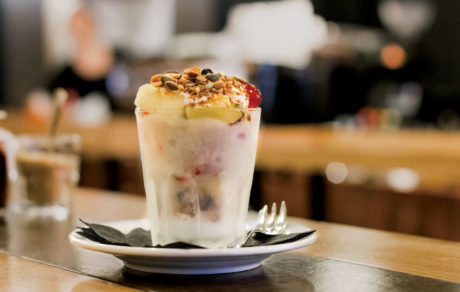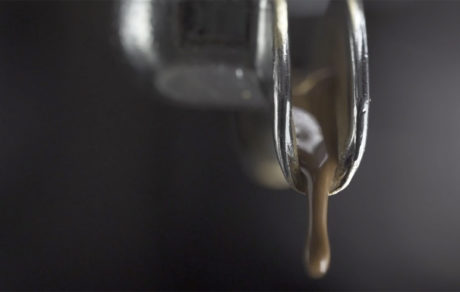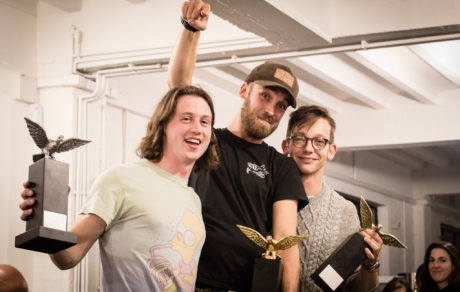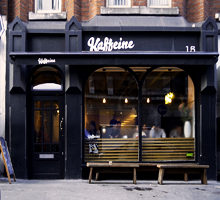Kaffeine Legend - Sam 'Boni' Boniface - Lead Barista
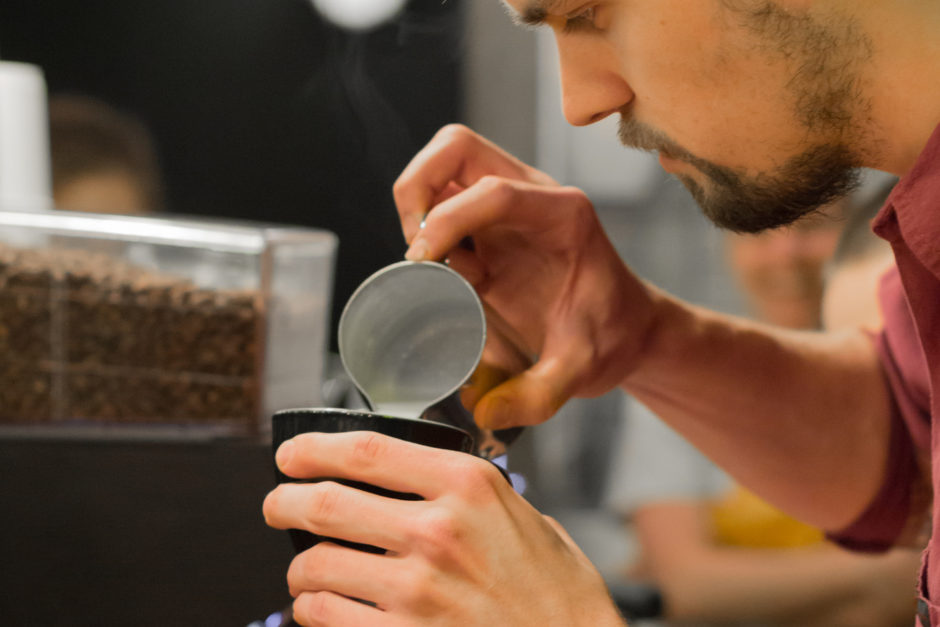
It has been a month since he left, in fact it took a while to get him to leave, as he kept coming back to cover shifts or to do more classes just after his actual real final day. He was meant to finish up at 4 pm on a Friday afternoon (we try to get finishing people to finish at 4, so they do not have to close) but another staff member was ill and had to go home, so on his last day he stayed back and closed the machine. Then a few more shifts over the next few weeks to help us cover staff, and a few more classes as and when required until his plane left a few weeks later to go for an extended holiday back home.
But that is Sam. Sam ‘Boni’ Boniface. Originally from NZ, with a German passport so he can stay in the UK or EU and a great talent at making coffee and a real desire to work hard, please everybody and just be a general all round nice person.
Sam worked for Kaffeine for just over two years first as a barista then as senior barista and since April 2015, as Lead Barista of Great Titchfield street. He also ran the cricket for us over two seasons, leading the operations there for the major matches of the seasons in 2015 and 2016 as well as leading the very popular latte art and one on one classes that we offer.
However, there is only so much Kaffeine can offer an employee and Sam has chosen to follow his coffee career still in London, but with another company that will see him involved in roasting and all the components that come with that.
The good thing is he will still be in London, and hopefully we can still catch up and talk business and hopefully play golf (he’s off a 2 handicap).
Sam, you worked over a great period of time in Kaffeine history and have worked with some amazing people, who I hope will remain your friends for a long time to come. You deserve the best because you strive to be the best, well done mate, well done indeed. You will be sorely missed.
I asked him to write about his time at Kaffeine, and below is his unadulterated version of what it is like to be a lead barista in a busy cafe.
Whilst I was in New York finishing up my travels through America, I applied for a barista position at Kaffeine and had landed an interview the day after my arrival to London. “Fresh off the boat…” as Peter would often refer to it. Researching Kaffeine I learnt that standards and expectations were very high. At the time I still had no idea about Kaffeines ‘legendary’ status amongst the London coffee scene or anything about the London coffee scene all together. My coffee knowledge was fairly substantial, I had learnt how to make coffee quickly but not to this level of precision. Shortly after a trial shift I was offered a barista position and at this point I knew I had to work extremely hard to prove my worth amongst a highly efficient, skilful and accomplished team.
I quickly realised that there was a thriving coffee scene in London that has been establishing itself for over the last decade. Cameron McLure is a New Zealander who founded and co-owned one of London’s first artisan coffee shops that opened in 2005 and is located on Berwick Street, ‘Old’ Soho. It sits amongst the bustling and vibrant street vendors, fabric stores and vinyl shops. Flat White was sharing an antipodean cafe culture with London that remains iconic today and has spurred inspiration that resulted in a substantial growth of independent and speciality coffee shops in central London.
This is one place that helped to spark imagination for Peter Dore-Smith and undoubtedly led to the opening of Kaffeine in 2009. Between that time, a couple of very well known champions developed a coffee roastery named Square Mile that is supplying London with some of the best coffee on the market. For more than seven years Kaffeine has been serving Square Mile’s signature blend called Red Brick which is comprised of a seasonal selection of coffees that have been very carefully put together to create an espresso that is robust with milk and delicious on it’s own. The hunt for a decent cup of coffee was beginning to change, however, the next important task was learning how to brew coffee properly in order to fully showcase the beauty of this exotic ingredient.
There was a camaraderie and banter behind the bar that helped to alleviate some of the stress and pressure of the job and created a more anthemic environment to work in. This environment provides that high level of barista theatre required when handling competently crafted coffee.
A recollection I am particularly proud of was working at the Marylebone Cricket Club more commonly know as Lord’s. This is a very prestigious venue in it’s own right and growing up as a back yard cricket superstar this was a wonderful opportunity for me to spend some time at the ‘home of Circket’. I was lucky enough to be taking through the Lord’s Pavilion which is only accessible to MCC members during a test match and demands a strict dress code. It also features the players dressing rooms, honours boards and The Long Room described as “…the most evocative four walls in Cricket”. It was my responsibility to get Kaffeine set up in the Harris Gardens and the Media Centre and this required a huge checklist of things essential for five days of coffee making, continuous on site management and extreme morning rush hours.
During the Ashes test in 2015 coffee numbers in the Harris Gardens would hit 1000+ on a busy morning between 08:30am/ 11:30am. We would serve both batch brew filter coffee and espresso based coffee and during that five day test we would grind 95+ kilos of coffee. We would hit similar numbers in the 2016 international tests and ODI. There would be a pleasant 10-15 minuets each morning after our preparation for service where we would see spectators eagerly running to there seats before getting there morning coffee. The calm before the storm. These are fond memories for me and I must say a special thank you to Chloe Turner for her helping hand and running of the Media Center during this years busy Cricket season.
Lead Barista
Kaffeine Ltd
66 Great Titchfield st.
15 Eastcastle st.
